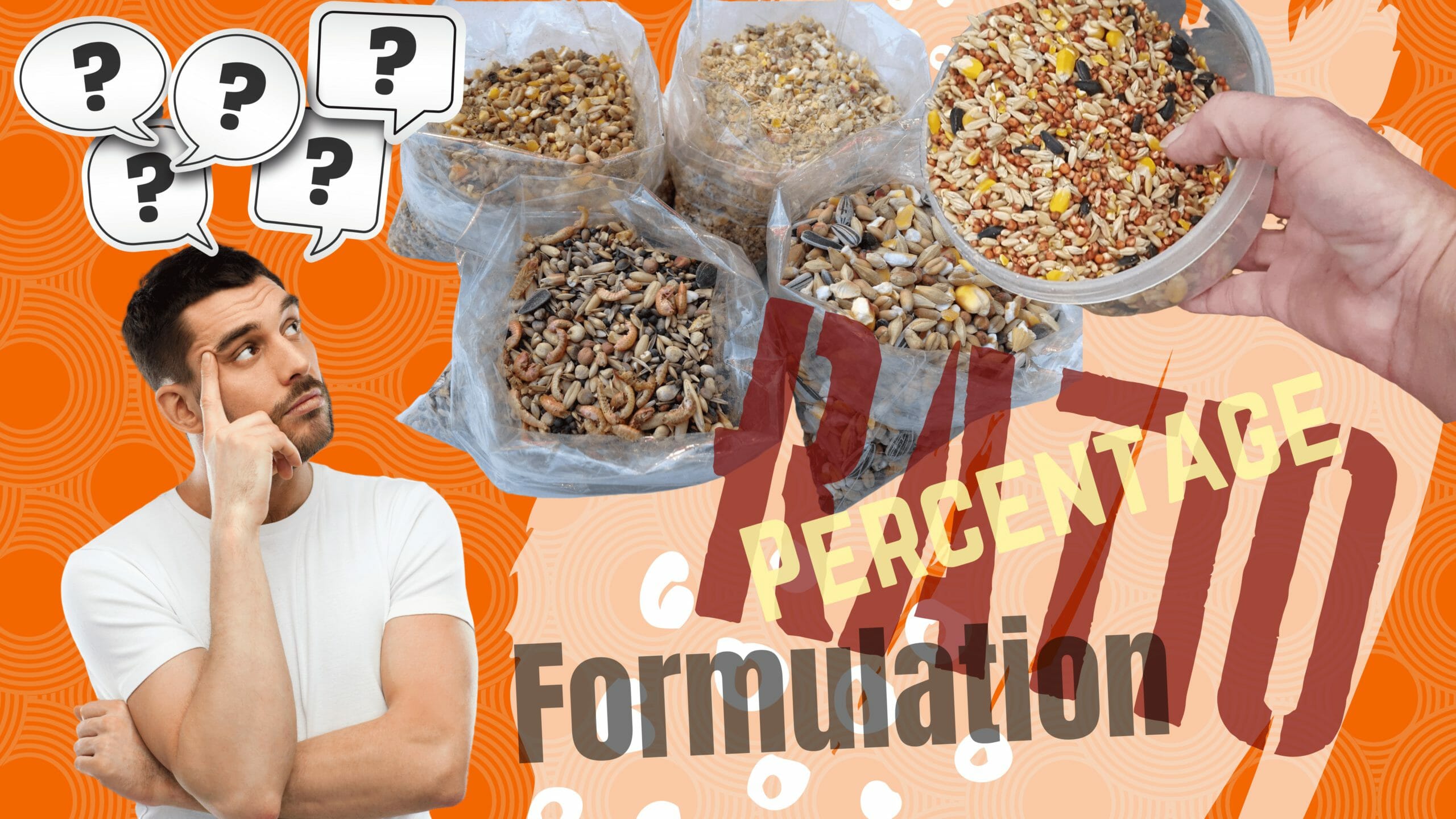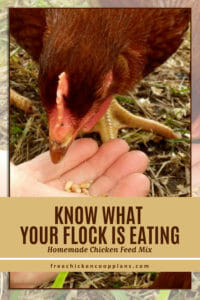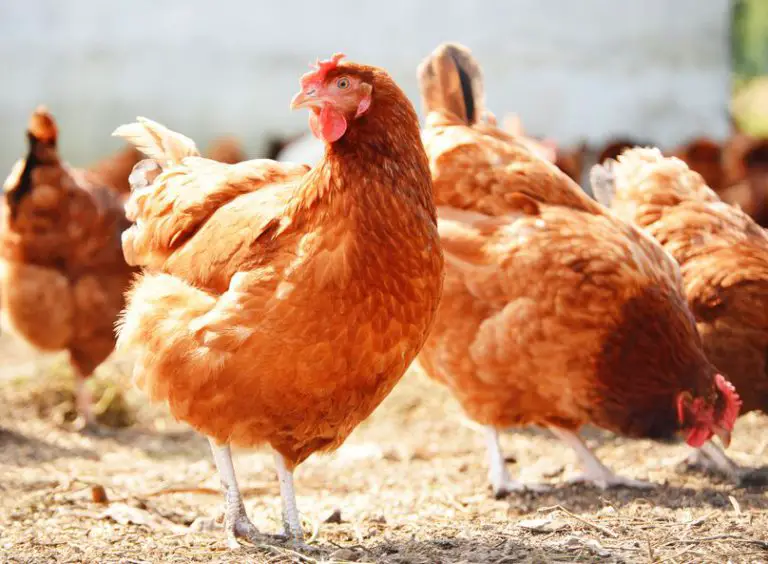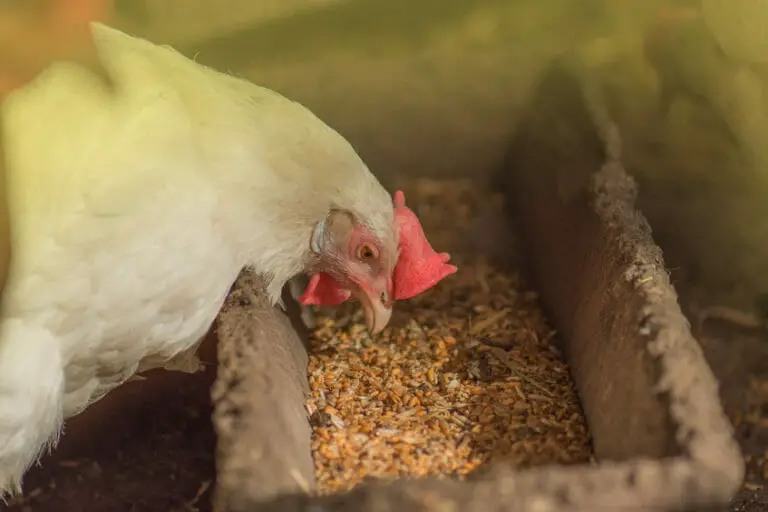Homemade Chicken Feed Mix – Know What Your Flock Is Eating
Have you been entertaining the idea of making your own chicken feed?
There’s a lot of things that go into making a homemade chicken feed mix. It’s not as easy as many online websites claim. Chickens are like us, if something’s wonky in our diet, our bodies let us know. If a chicken’s daily nutritional needs aren’t being met correctly, they’ll have diarrhea, egg-laying issues, and a host of other problems.
Switching a chicken from commercial feed to homemade feed may also present a problem. They are very picky eaters, and quite frankly, they’ll turn their beaks up at something new and not eat.
We’re going to give you a comprehensive overview of trying your hand a homemade chicken feed and give you the good, the bad, and the ugly on this subject.
If you’re wanting to get a basic idea of other types of chicken feed, read this article.
Chicken Feed 101
There’s no such thing as feeding a one-size-fits-all feed for your chickens. Chickens have different nutritional requirements that are dependent upon their life stage, or if they are being raised for meat.
There are four cornerstones on which chicken feed formulations are calculated. These formulations are based on the daily nutritional needs of chickens at varying stages of their life.
Four Cornerstones of Feed
- Proteins: for growth, strength, and egg production
- Carbs/Fats: for energy, warmth, and egg production
- Vitamins/Minerals: for overall health and immune system
- Grit: for digestion
Forms of Feed
Chicken feed typically comes in three forms.
More on these feed types can be found here.
Chicken Nutritional Requirements by Age/Category
As you can see from the table below, the protein requirements differ among chickens. Chicks depend on a diet of high protein to encourage growth and health. Egg layers require calcium supplementation to their diet, whereas the other chickens don’t.
| Chicks
Up to 18 weeks 20% protein (highest protein of all feeds) to promote growth |
Pullets/Growers
18+ weeks 14-16% protein |
Layers
(must be egg laying) 16-18% protein with calcium supplement for egg production |
Broiler
18-20% protein (high protein) to encourage growth for meat |
Commercial Feed vs. Homemade Feed
We’ve listed common chicken feed ingredients in both commercial feed and homemade feed. This gives you an idea of the differences between commercial and homemade feeds.
The Pros and Cons of Making Your Own Feed
Making homemade feed may not be for everyone. Below are both advantages and disadvantages of making homemade chicken feed.
Homemade Chicken Feed Formulation
Unless you have experience in balancing ratios of proteins, carbs, and fats, it’s probably best you lean on your local feed store to help you in formulating your feed. There are numerous homemade feed recipes online that may be lacking the nutrition your chickens need. Too much or too little will cause health issues for your chickens.
Most chicken farmers/owners rely on the Pearson Square formulation when making homemade chicken feed or other livestock feeds. If you are timid when it comes to math, this model may not be for you.
To make things simple, try using a trustworthy and experienced source willing to share their formulation. Again, be very careful using online recipes and formulations from individual people. Do your homework and make sure their formulations are based on the Pearson Square and the daily requirement percentages for chickens.
Like This Post? Pin It
A Trusted Formulation: Joel Salatin’s Chicken Feed Recipe/Formulation
If you have a small flock of chickens, you may want to cut this formulation back to ¼ or ½ the total amount. The maximum storage life of this formulation is three weeks. This is from his book “Pastured Poultry Profits,” an excellent “go-to” resource for all things related to raising chickens.
| Carbs | Corn (medium ground) | 52 lbs. | |
| Proteins | Roasted Soybean or Soybean Meal
Fish Meal (Sea-Loc) |
29 lbs.
3.5 lbs. |
Do not feed raw soybeans to chickens. (Toxic) |
| Grain | Oats
(substitute with wheat, barley, or rye) |
11 lbs. | |
| Calcium (for layers) | Limestone (feed-grade) | 1 lb. | |
| Minerals/Vitamins | Fertrell Nutri Balancer
Kelp |
3 lbs.
0.5 lb. |
|
| Probiotic | Fastrack Conklin Co. | 0.1 lb. |
Homemade Organic Chicken Feed
What exactly constitutes “organic” in chicken feed?
Free from:
-
Insecticides
-
Pesticides
-
Fertilizer
-
Genetic modification
-
Preservatives
-
Hormones
-
Antibiotics
-
Rendered protein (animal byproduct)
You can make your own organic chicken feed recipe by using Joel Salatin’s formulation. Substitute organic grains, soybeans/meal, and fish meal in place of the regular commercial ingredients.
Finding organic feed ingredients can present a challenge. It will also be more expensive.
An example of an organic chicken feed recipe based on the above formulation.
| Carbs | Organic Grains you can use:
|
52 lbs. | |
| Proteins | Organic Proteins you can use:
|
29 lbs.
3.5 lbs. |
Do not feed raw soybeans to chickens. (Toxic) |
| Grain | Organic Oats
(substitute with organic wheat, organic barley, or organic rye) |
11 lbs. | |
| Calcium (for layers) | Limestone (feed-grade) | 1 lb. | |
| Minerals/Vitamins | Fertrell Nutri Balancer
Kelp (organic) |
3 lbs.
0.5 lb. |
|
| Probiotic | Fastrack Conklin Co. | 0.1 lb. |
The Last “Cluck”
We hope we gave you a glimpse into what goes into making your own chicken feed. Although it may appear to be easy from the various online recipes, it must be fine-tuned. Your chicken’s health, and life, depend on a feed with the right ratios of ingredients.
If you have the time and willingness to thoroughly research formulating your own chicken feed, it can pay off in the long run. We have listed a few reliable resources below that you can use as a starting point in learning all there is to know about feed formulations.
- Vetsoft Feed Formulation Software
https://www.vetsoft.com.eg/feed-formulation-solution
- Colorado State University Extension
- University of Nebraska, Lincoln Extension
Best of luck in your homemade chicken feed venture. Happy Chickening!










